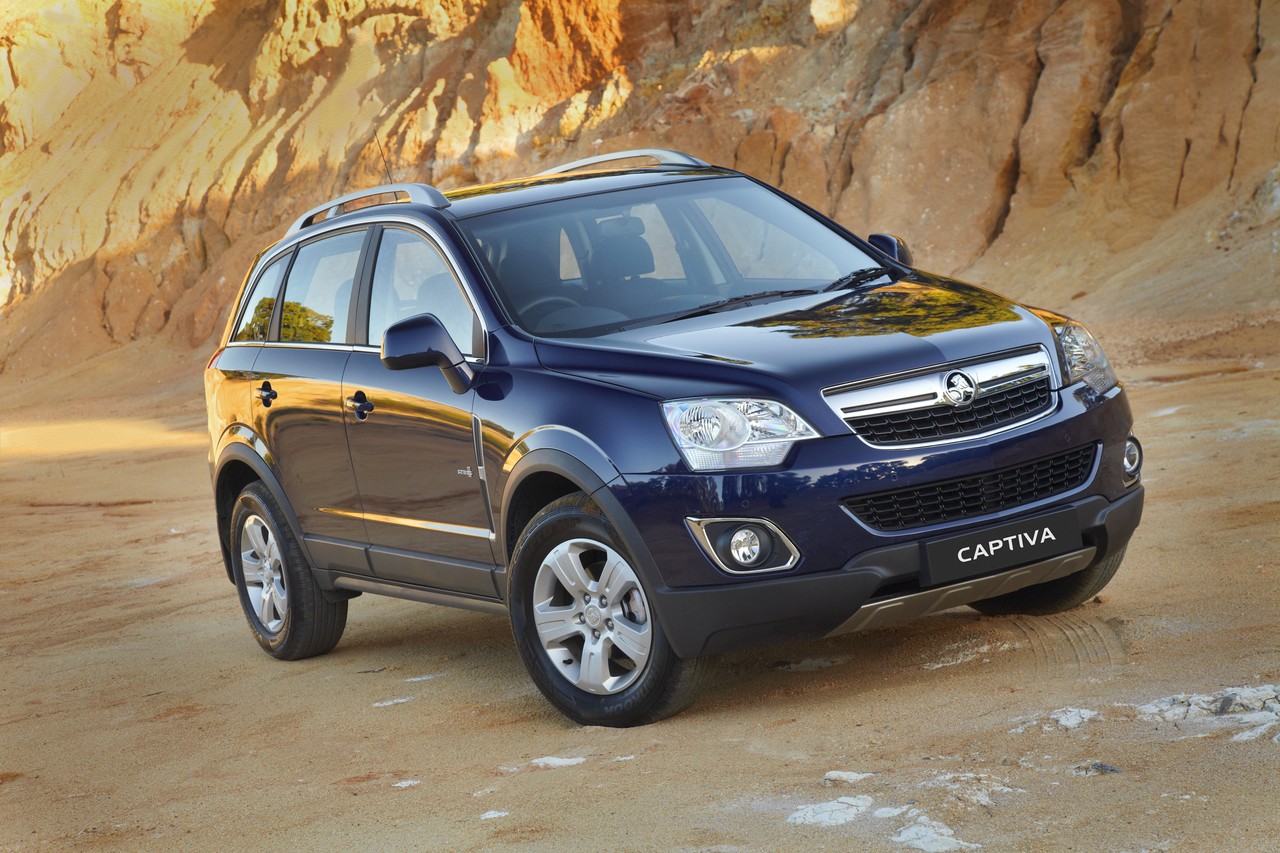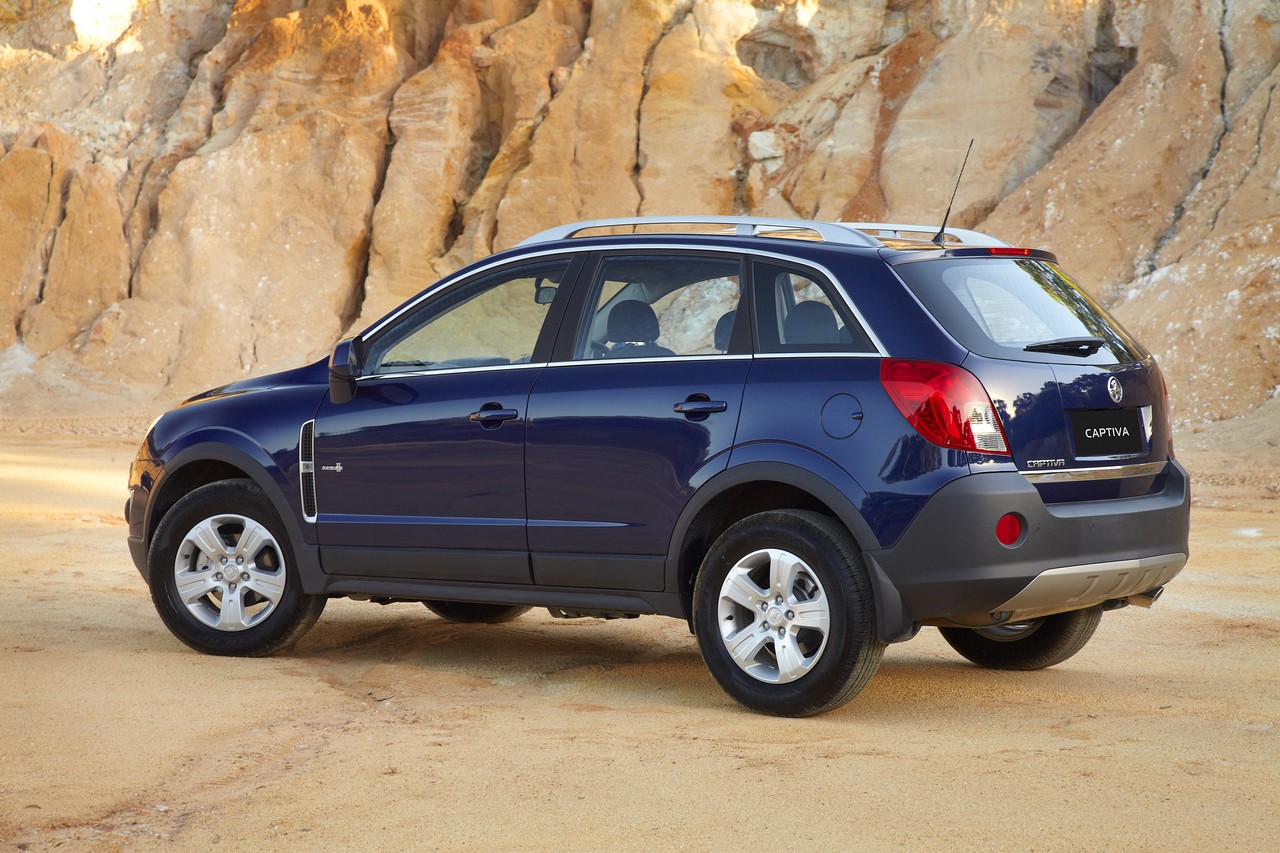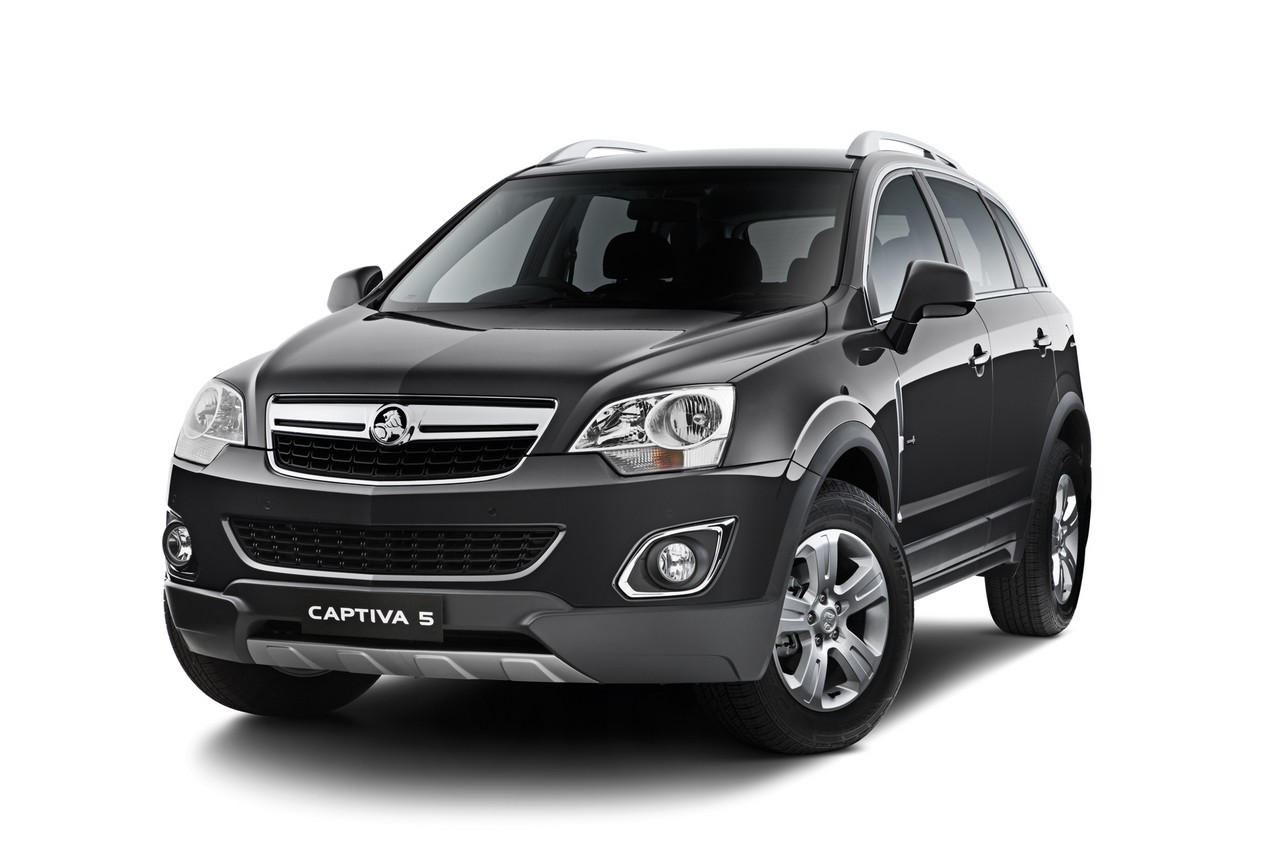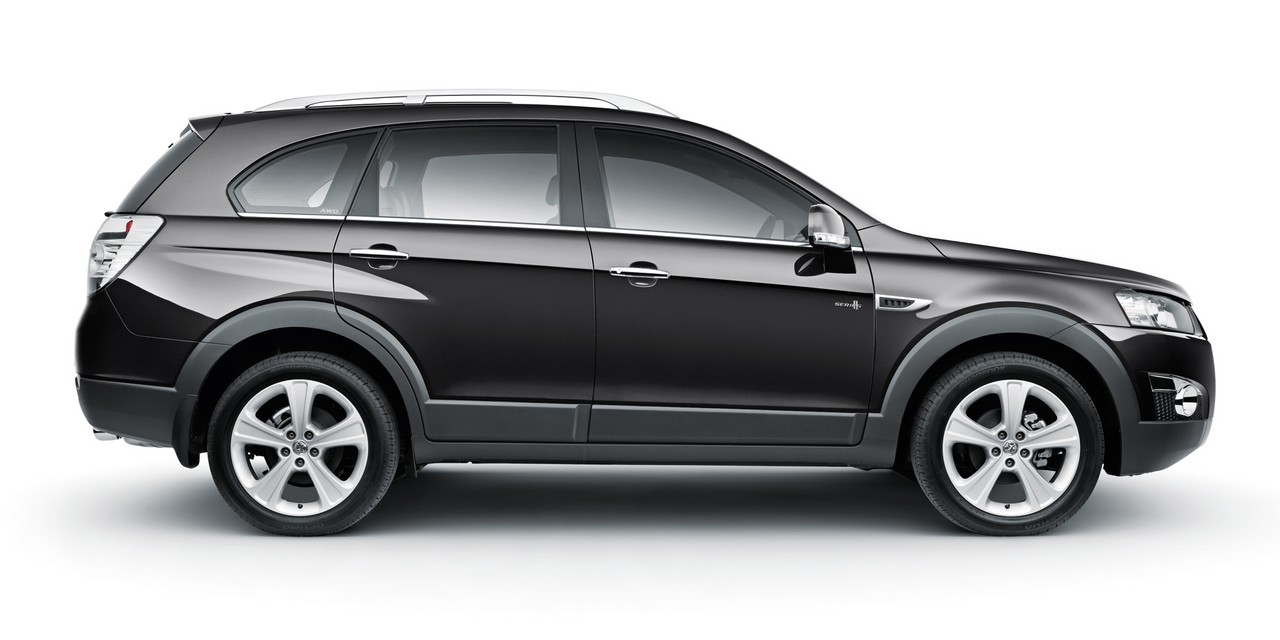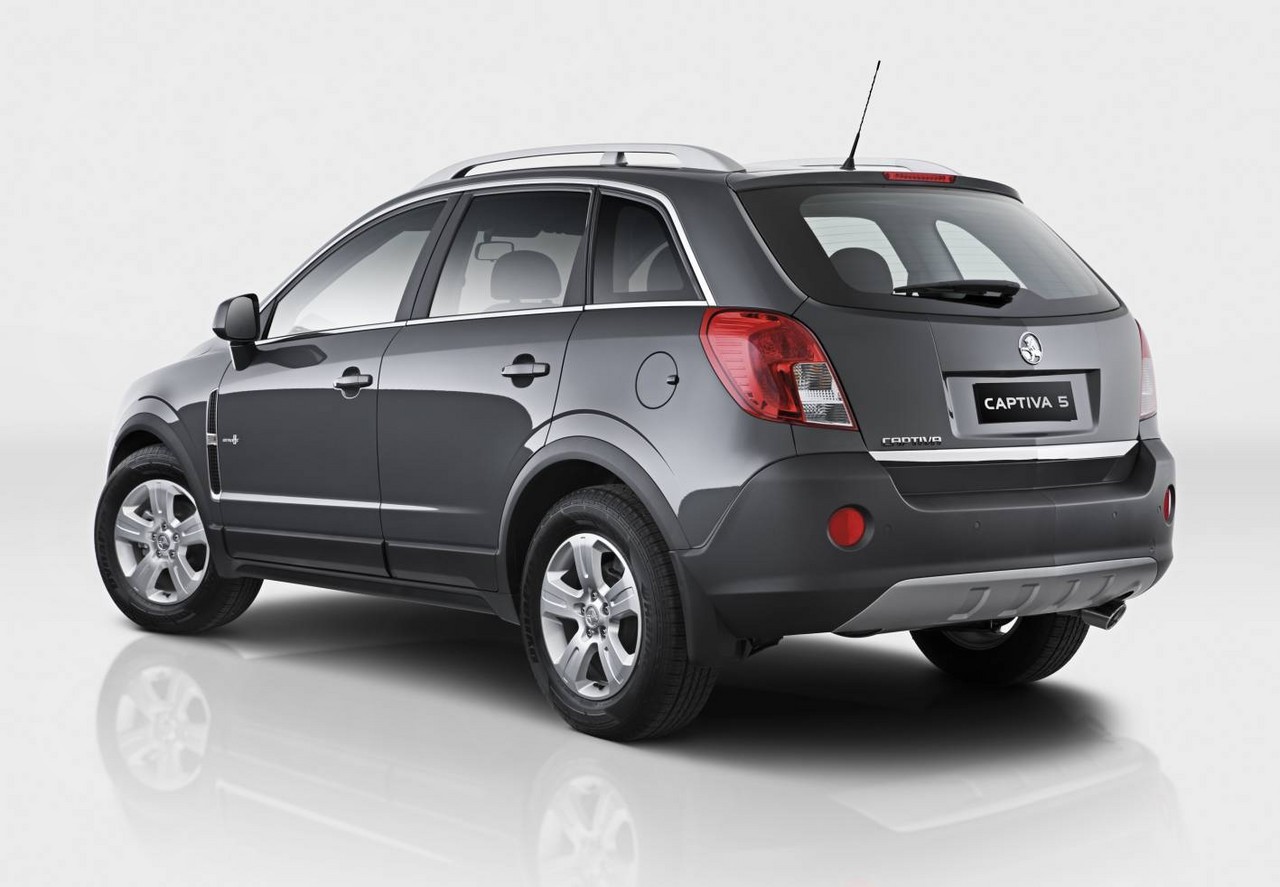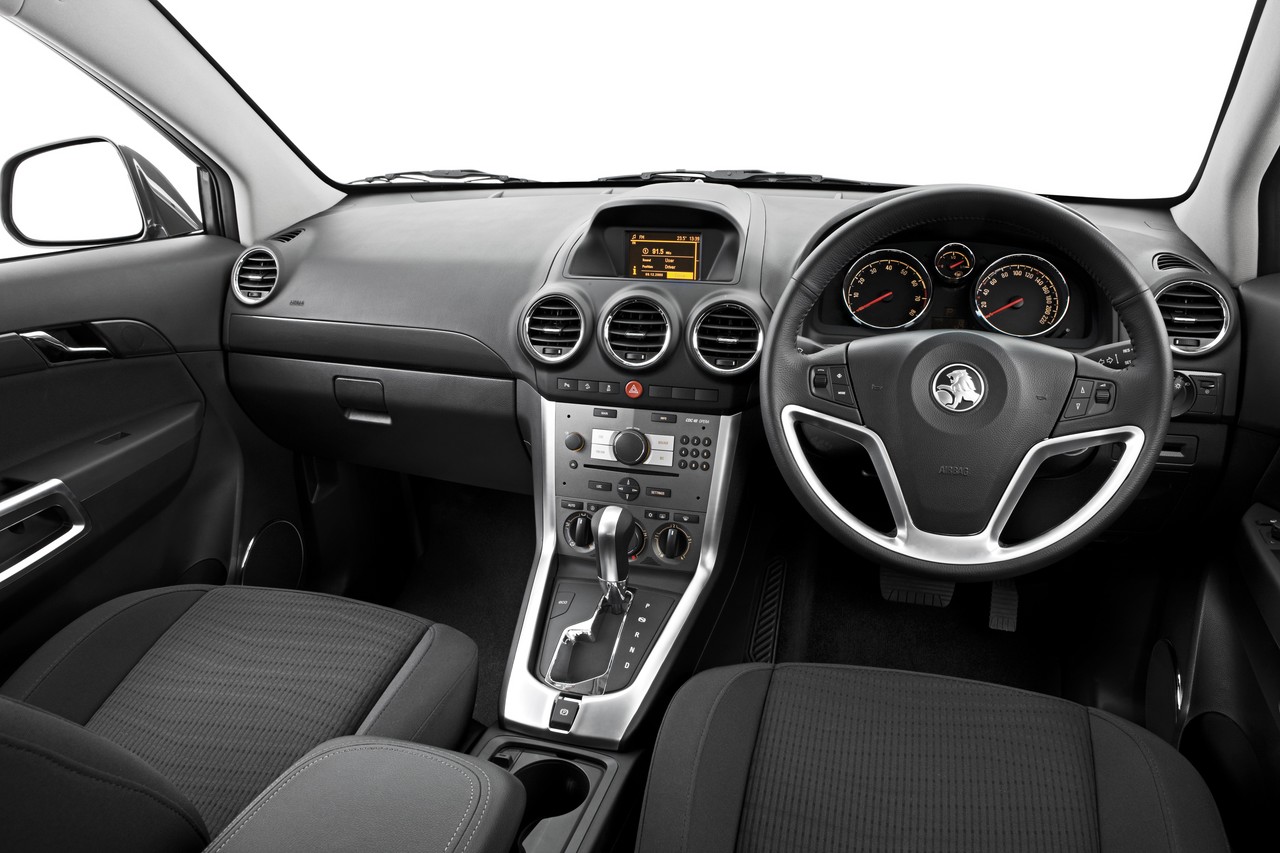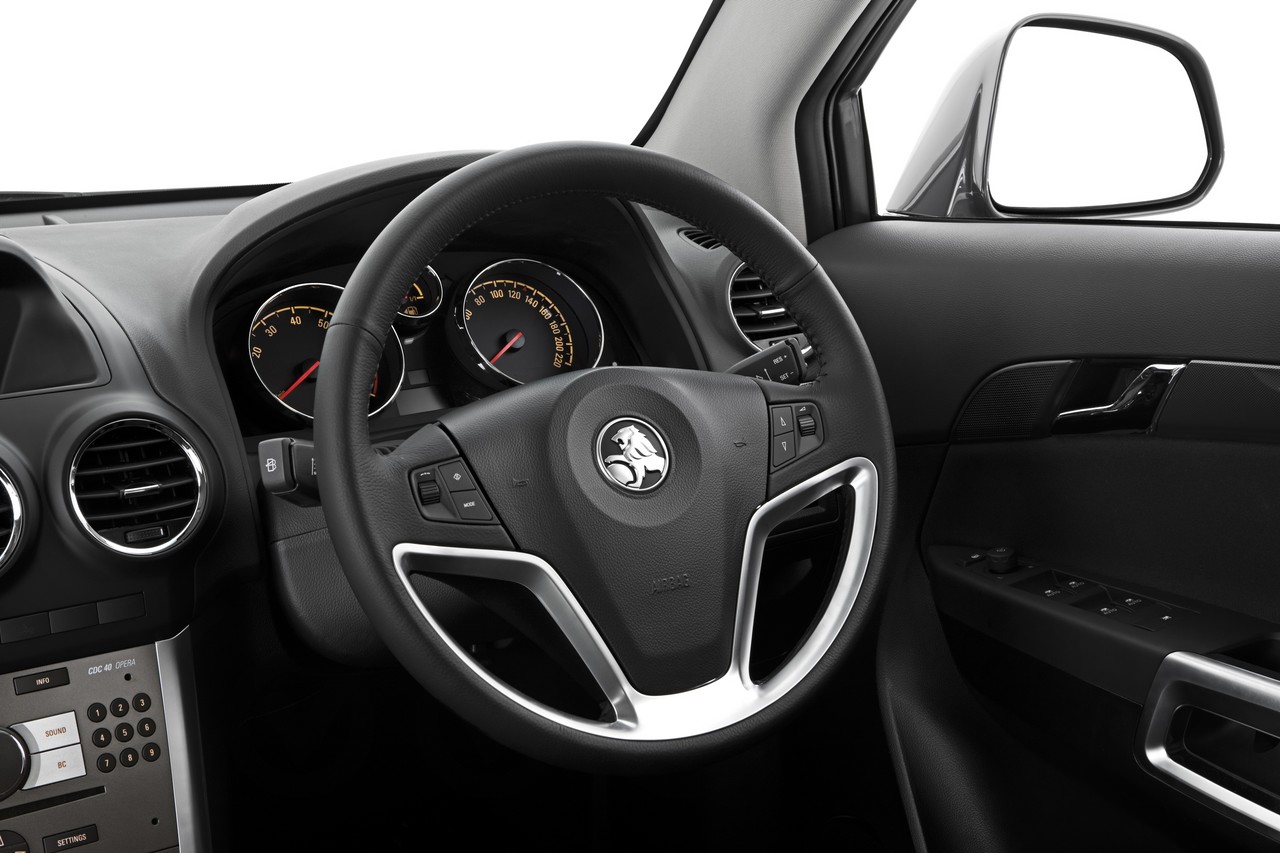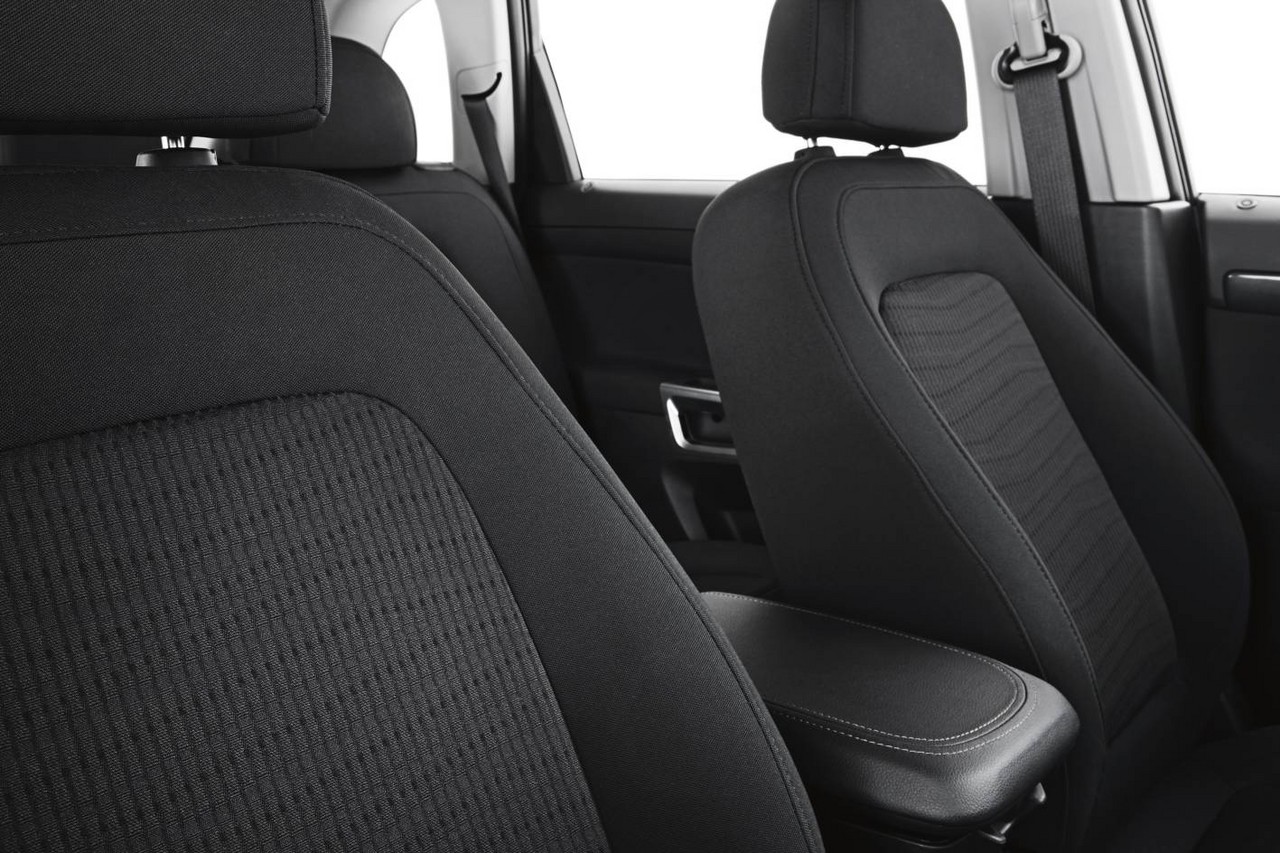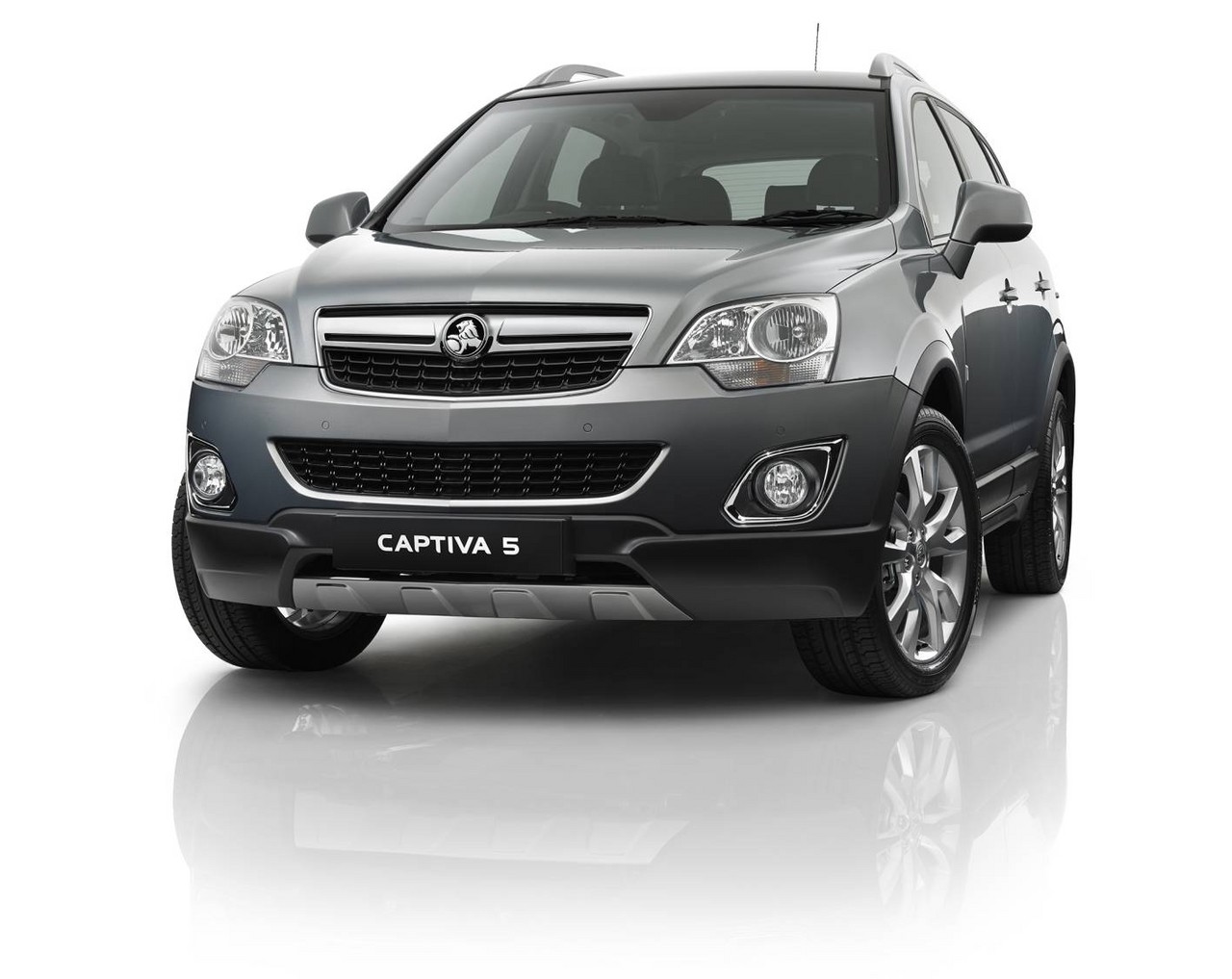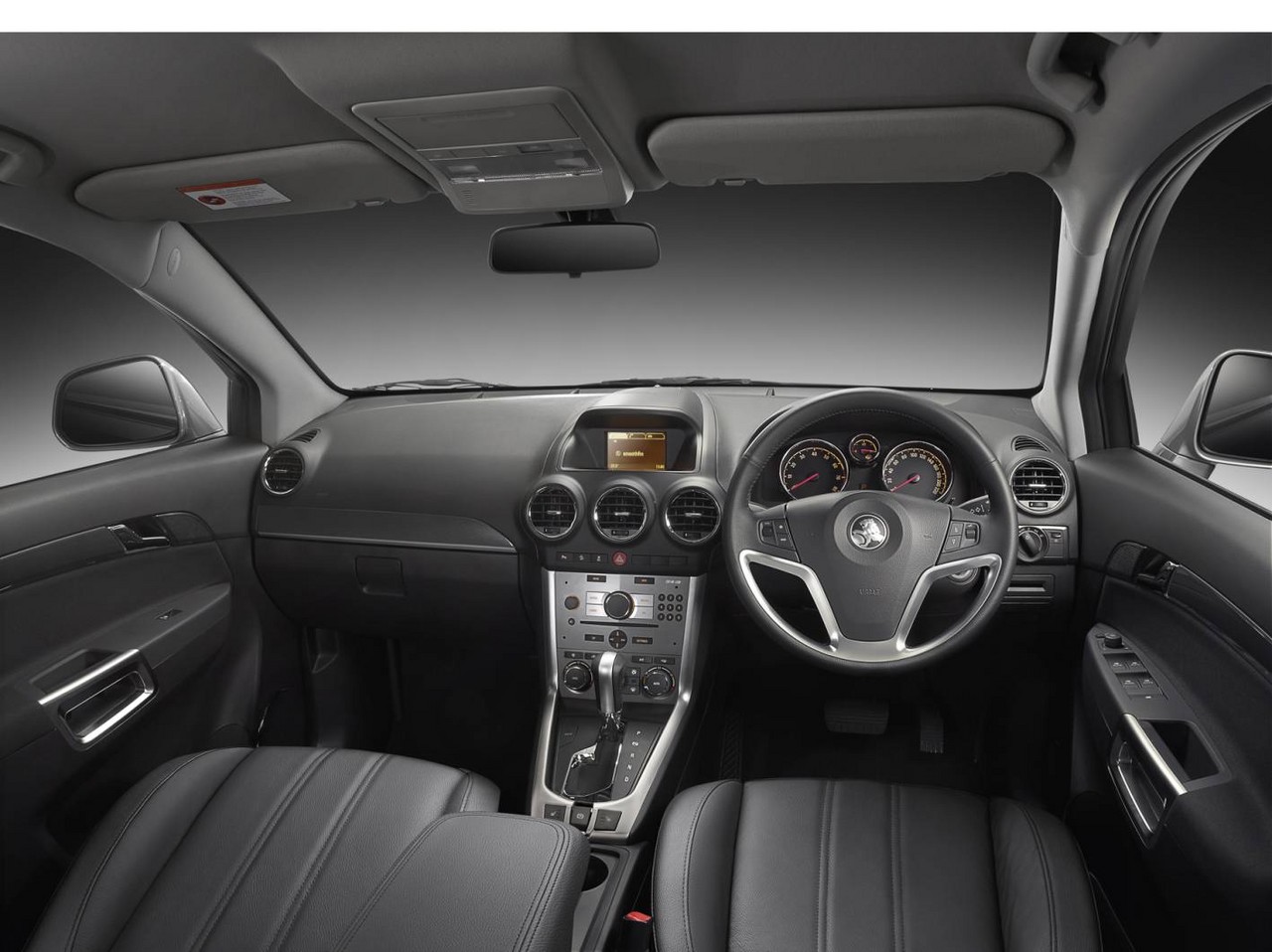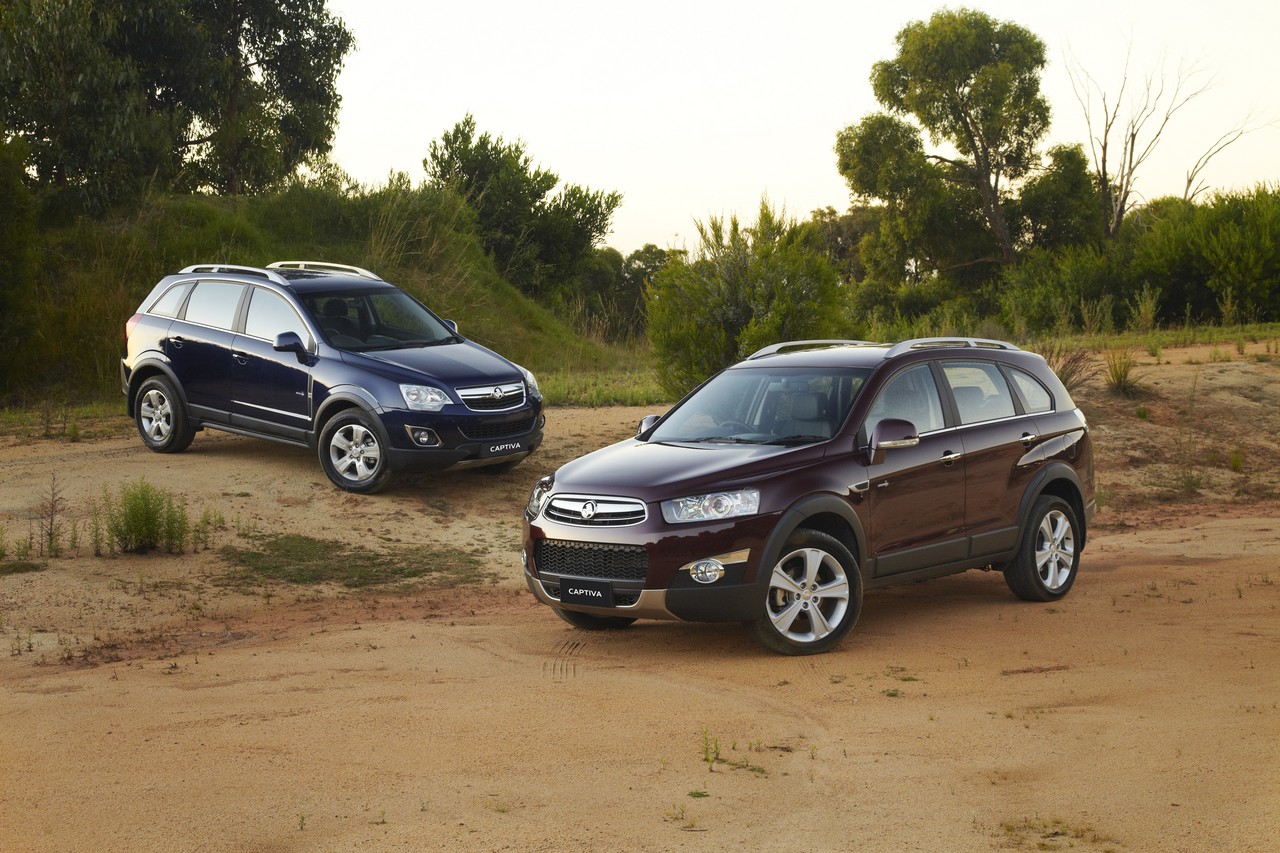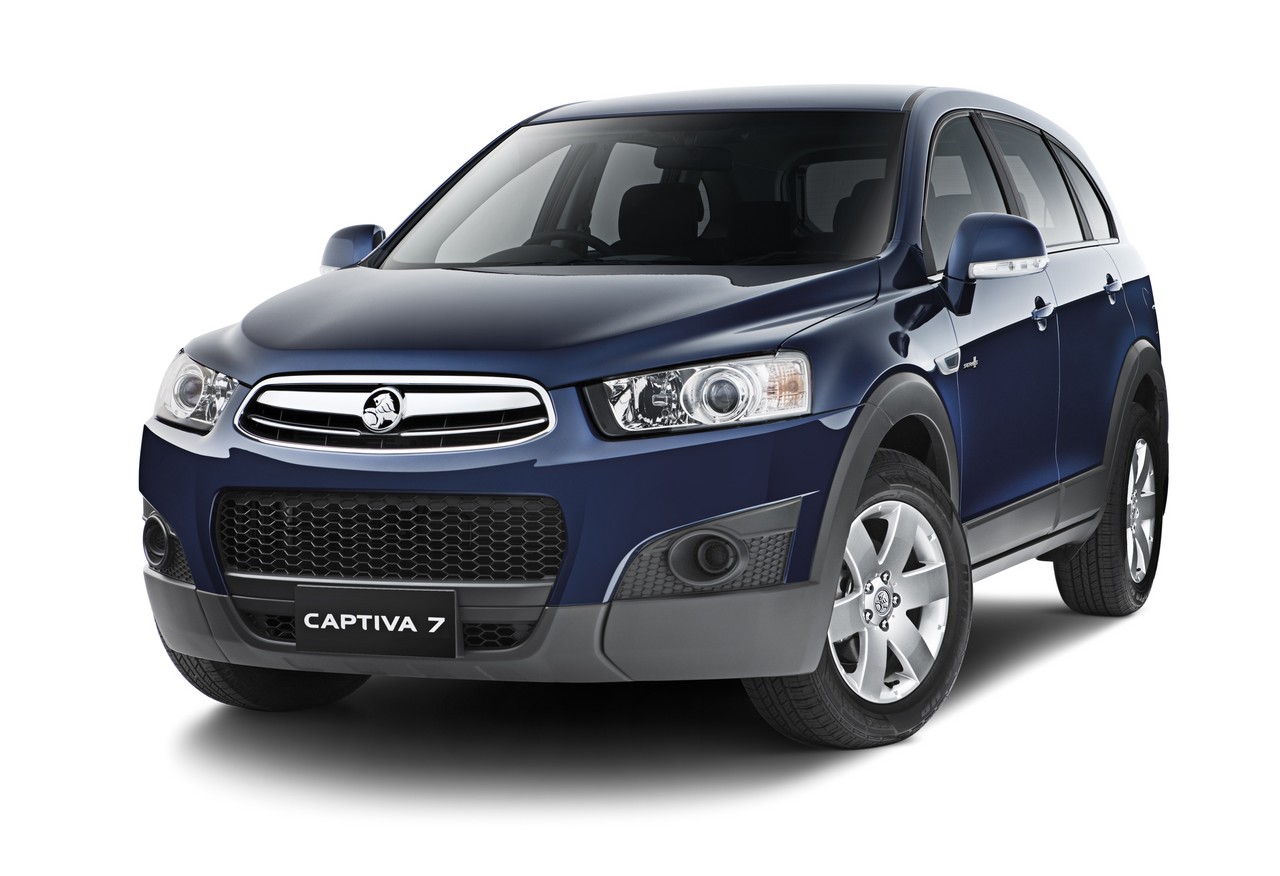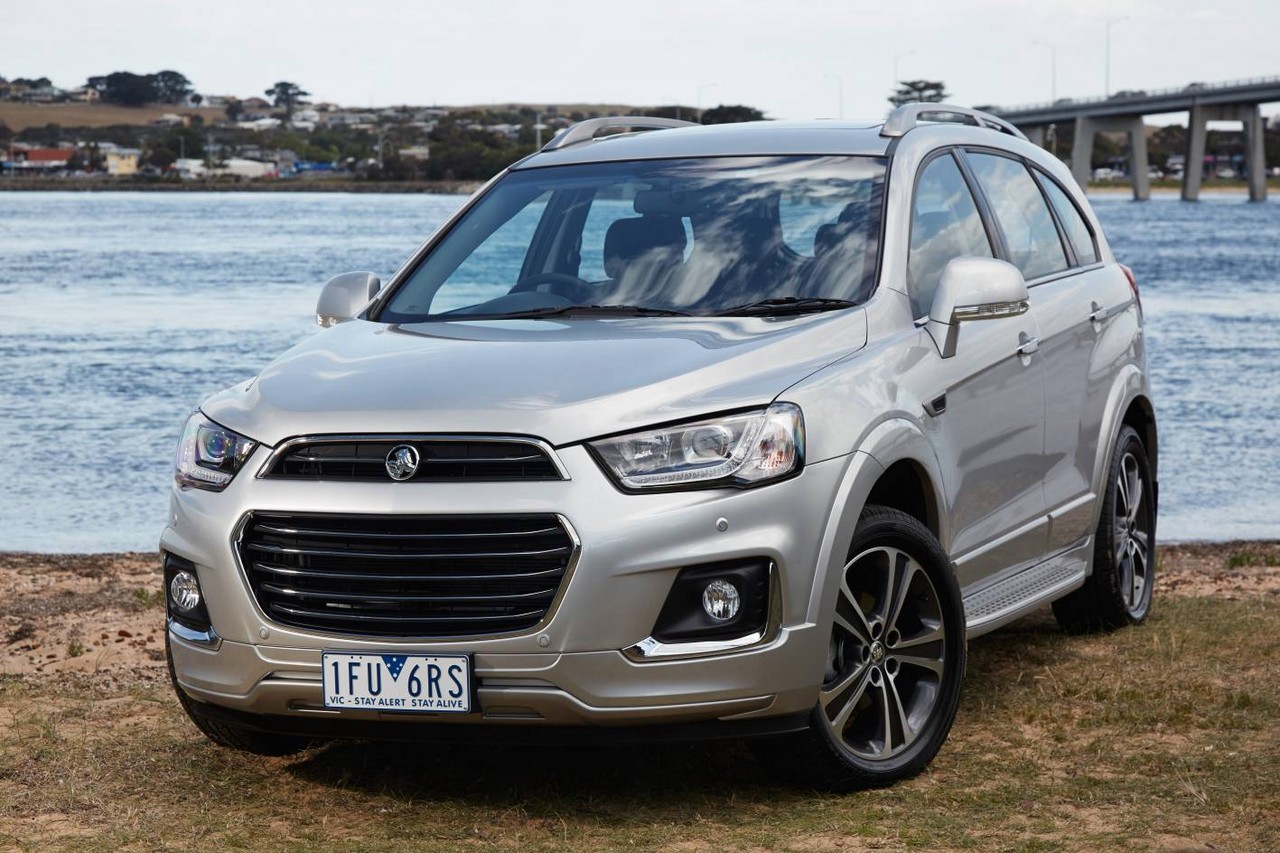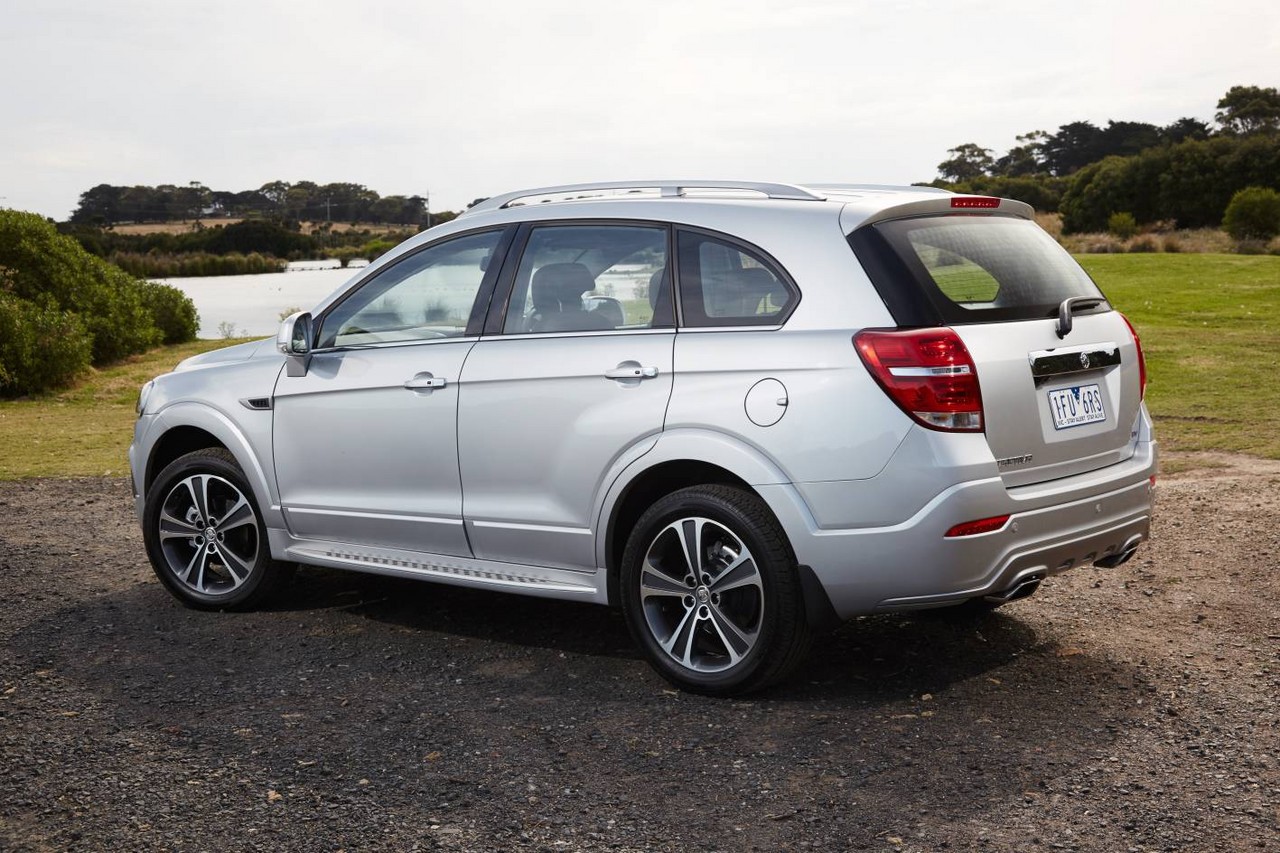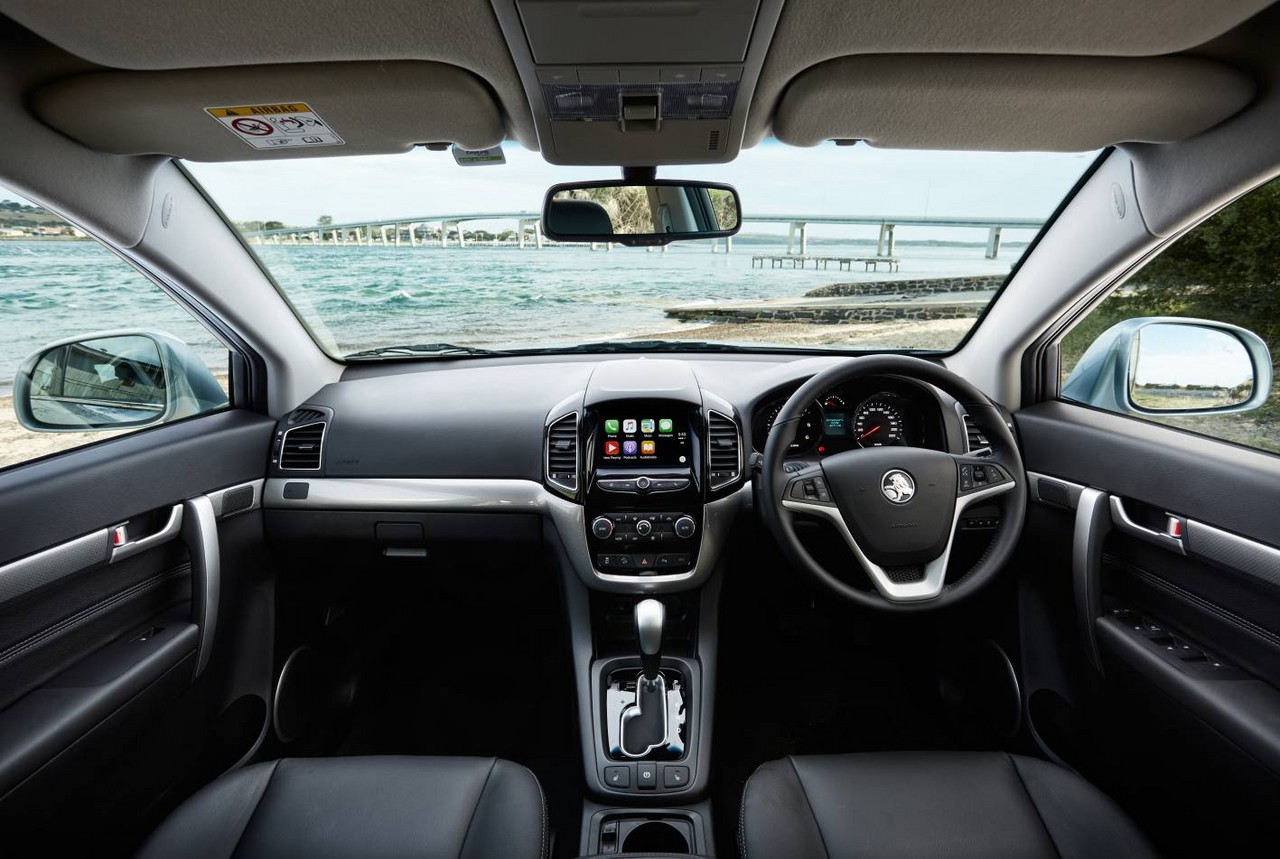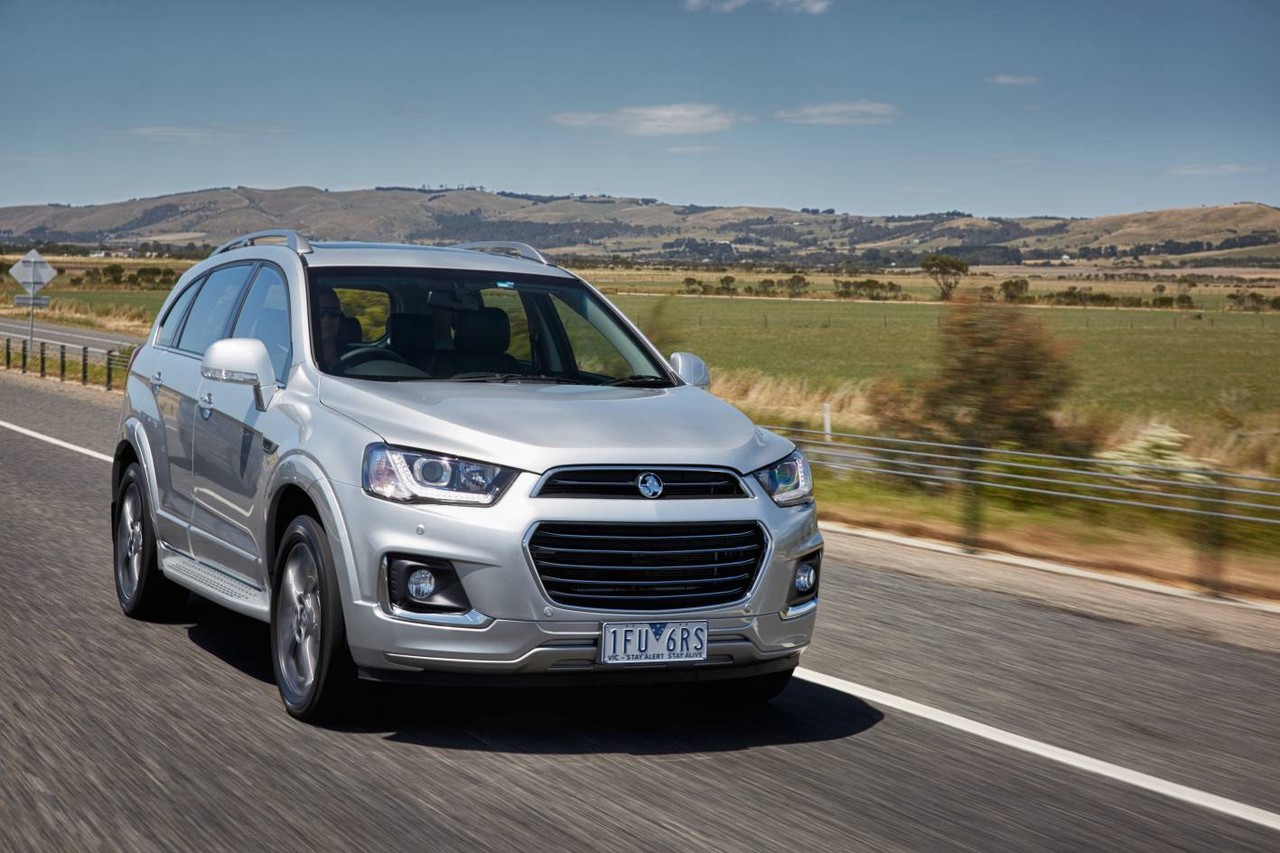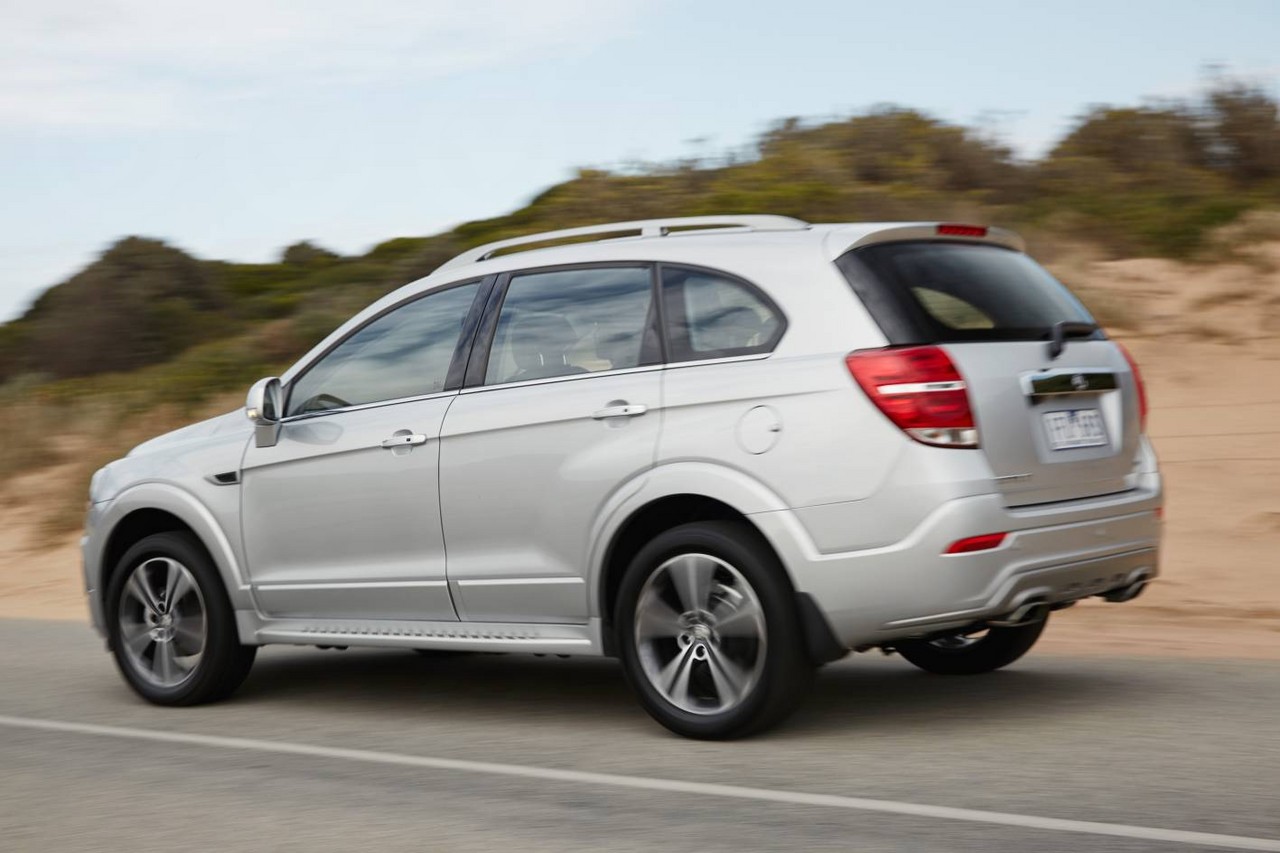
- Affordable retail pricing
- Captiva 7 has a spacious and versatile interior
- Captiva 7 achieves a good ride/handling balance
- Captiva 5’s suspension lacks compliance, engine bay lacks insulation
- Noisy, laggy turbo-diesel engine
- Large turning circle
- Captiva 7: direct injection engines susceptible to carbon deposits on intake valves
Review: Holden CG2.I Captiva (2011-15)
Overview
Released in March 2011, the Holden CG2 Series I (CG2.I) Captiva range consisted of the Captiva 5 and Captiva 7 models, with five and seven seats respectively. Manufactured in Bupyeong-gu, South Korea, the CG2 Captiva range was powered by 2.4- and 3.0-litre petrol engines and 2.2-litre turbo-diesel engines.
Engines: 2.4 LE5, 3.0 SIDI V6 and 2.2 Diesel
Of these engines,
- The 2.4-litre LE5 four-cylinder petrol engine had an aluminium cylinder block and head, double overhead camshafts, four valves per cylinder, variable intake and exhaust valve timing and a compression ratio of 10.4:1;
- Shared with the VE Commodore and VF Commodore , the 3.0-litre LF1 V6 petrol engine had an aluminium block and cylinder head, direct fuel injection, double overhead camshafts, four valves per cylinder, variable intake and exhaust valve timing and a compression ratio of 11.7:1; and,
- The 2.2-litre ‘Family Z’ Z22D1 diesel engine had a cast iron block, aluminium cylinder head, common-rail direct injection (operating at up to 1800 bar), variable geometry turbocharger with intercooler, double overhead camshafts, four valves per cylinder, a diesel particulate filter and a compression ratio of 16.3:1.
Transmission options consisted of six-speed manual and automatic units.
CG2 developments
Compared to its Holden CG Captiva predecessor, the CG2 Captiva range introduced new engine and transmission options and improved fuel economy, refinement and safety equipment. Visually, the CG2 Captiva 5 could be identified by its more angular front-end treatment and mesh grille, while the Captiva 7 featured elongated headlights, a twin-port grille with prominent fog lights and clear lens tail lights.
July 2012 and April 2013 updates
In July 2012, the Captiva range was updated for improved fuel efficiency and all petrol engines were E85-compatible.
In April 2013, the ‘model year 2013’ (MY13) Captiva was released. As part of the update, the entry-level Captiva 5 variant became the LT and a better-equipped LTZ variant was introduced. Mechanical changes included the introduction of ‘Gen II’ six-speed automatic transmissions and a new final drive ratio for models with turbo-diesel engines.
December 2013 update (MY14)
In December 2013, the Captiva range was updated and retail prices were reduced. Within the Captiva 7 range, the variant were renamed as SX became LS, CX became LT and LX became LTZ.
Visually, the post-December 2013 Captiva could be identified by its redesigned front fascia and grille, new rear fascia with chrome exhaust tips and LED tail-lights; standard features were also extended (described below).
| Engine | Drive | Variant | Trans. | Years | Peak power | Peak torque | |
|---|---|---|---|---|---|---|---|
| Captiva 5 | 2.4-litre petrol I4 |
FWD | N/A | 6sp man., 6sp auto |
2011-13 | 123 kW at 5600 rpm | 230 Nm at 4600 rpm |
| LT | 6sp man., 6sp auto |
2013-15 | |||||
| LTZ | 6sp auto | 2013-15 | |||||
| 2.2-litre turbo-diesel I4 |
AWD | N/A | 6sp auto | 2011-13 | 135 kW at 3800 rpm | 400 Nm at 2000 rpm | |
| LT, LTZ |
6sp auto | 2013-15 | |||||
| Captiva 7 | 2.4-litre petrol I4 |
FWD | SX/LS | 6sp auto | 2011-15 | 123 kW at 5600 rpm | 230 Nm at 4600 rpm |
| 2.2-litre turbo-diesel I4 |
FWD | SX/LS | 6sp auto | 2011-15 | 135 kW at 3800 rpm | 400 Nm at 2000 rpm | |
| AWD | CX/LT, LX/LTZ |
||||||
| 3.0-litre LF1 petrol V6 |
AWD | CX/LT, LX/LTZ |
6sp auto | 2011-15 | 190 kW at 6900 rpm | 288 Nm at 5800 rpm |
AWD system
The all-wheel drive system for the Holden Captiva utilised an electronically-controlled, hydraulic multi-disc wet clutch. In normal conditions, the clutch to the rear axle was open such that drive was directed to the front wheels. In the event that the vehicle’s on-board computer determined that rear wheel traction was required, however, the clutch could engage to direct up to 50 per cent of the engine’s torque to the rear axle.
The Captiva AWD models were also equipped with hill start assist and hill descent control.
Dimensions and suspension
Underpinned by General Motors’ Theta platform, the Captiva 7 was 4673 mm long, 1849 mm wide, 1727 mm tall and had a 2707 mm long wheelbase. The Captiva 5, however, was closely related to the European-delivered Opel Antara and distinguished by its styling and interior; the Captiva 5 was also 77 mm shorter (at 4596 mm) and 10 mm lower (1717 mm).
The CG2 Captiva had MacPherson strut front suspension and independent, four-link rear suspension with a ‘level ride’ function which maintained the ride height of the rear suspension under varied load conditions.
Safety equipment
Standard safety equipment for the Holden Captiva 5 and Captiva 7 included dual front airbags, front side airbags, curtain airbags for front and second row occupants, ABS, electronic brake force distribution, brake assist, electronic stability control, traction control, active rollover control, hill descent control and front seatbelts with pretensioners and load limiters.
Euro NCAP crash testing
In Euro NCAP crash testing , a CG2 Captiva 7 with a 2.2-litre turbo-diesel engine received a five star safety rating with an 88 per cent adult occupant protection rating and an 82 per cent child occupant protection rating. In the offset crash test, there was a slight risk of serious chest and leg injury for both front occupants. Maximum points were awarded in the side impact test, though chest protection was rated marginal in the more severe pole test. Under ANCAP’s methodology, the testing resulted in an overall occupant protection score of 34.32 out of 37.
Features: Captiva 5
Standard features for the Captiva 5 included a seven speaker sound system with a six-disc CD player and MP3 compatibility, semi-automatic climate control air conditioning, cruise control, front and rear parking sensors, front fog lights, automatic headlights, leather-wrapped steering wheel, 60/40 split and flat folding second row seats, remote central locking, power mirrors and windows, a height and reach adjustable steering wheel, power-operated park brake, 12 volt power outlets, a trip computer with information display, roof rails and an immobiliser.
In January 2014, standard features for the Captiva 5 were extended to include 18-inch alloy wheels and chrome door handles.
The LTZ variants were further equipped with 19-inch alloy wheels, an eight-way power adjustable driver’s seat, leather seat trim, heated front seats and rain-sensing wipers.
Features: Captiva 7
Standard features for the Captiva 7 SX/LS included 17-inch alloy wheels, a four speaker sound system with a CD player, MP3-compatibility and Bluetooth audio streaming, air conditioning, cruise control, automatic headlights, Bluetooth mobile phone connectivity, leather-wrapped multi-function steering wheel, 60/40 split and flat folding second row seats, 50/50 split and flat folding third row seats, remote central locking, power windows and heated mirrors, a height and reach adjustable steering wheel, a power-operated park brake, 12 volt power outlets and an immobiliser.
The CX/LT was further equipped with 18-inch alloy wheels, a six speaker sound system, climate control air conditioning, ‘Sportec’ seat bolsters, rear parking sensors, front fog lights, compass, roof tails and a trip computer with information display.
Beyond this, the LX/LTZ added 19-inch alloy wheels, an eight speaker sound system, USB input, satellite navigation with 7-inch touch screen, reversing camera, leather seats, a power adjustable driver’s seat and an electrochromatic rear view mirror.
Captiva 7: July 2012 and January 2014 updates
In July 2012, standard features for the Captiva 7 were extended to include a USB input with iPod connectivity, the SX was fitted with rear parking sensors and the LX gained heated front seats and front parking sensors.
From January 2014, the Captiva 7 LT variants were fitted with 18-inch alloy wheels, while standard features were extended to include a proximity key and push-button start. Furthermore, both LT and LTZ variants were fitted with integrated side steps.
2015 Captiva 7 Active
Released in February 2015, the Captiva 7 Active was based on the front-wheel drive Captiva 7 LS and powered by a 2.4-litre petrol engine. Relative to the LS, however, the Captiva Active was further equipped with 18-inch alloy wheels, leather seat trim, an eight-way power adjustable driver’s seat, front fog lights, a sunroof and roof rails.
Brochures
- Brochure: Holden CG2 Captiva 5 (February 2011)
- Brochure: Holden CG2 Captiva 7 (February 2011)
- Brochure: Holden CG2 Captiva 5 (October 2011)
- Brochure: Holden CG2 Captiva 5 (February 2014)
- Brochure: Holden CG2 Captiva 7 (March 2014)
Related links
- Product Information: Holden CG2 Captiva (February 2011)
- Holden Media: Holden Captiva – More Efficient, More Features, More Choice (July 2012)
- Specifications: Holden CG2 Captiva 5 (February 2014)
- Specifications: Holden CG2 Captiva 7 (January 2014)
Review: Holden CG2.II Captiva (2015-17)
Overview
Commencing production in October 2015 and officially released in Australia in February 2016, the Holden CG2 Series II (CG2.II) Captiva introduced a revised range as there were no longer separate Captiva 5 and Captiva 7 models, but a single Captiva model. While the Captiva LS had five seats as standard and seven available as an extra-cost option, the Captiva LT and LTZ had seven seats as standard.
The Holden CG2.II Captiva could be identified by its new front grille, fascia, LED daytime running lights and body-coloured cladding. Inside, the CG2.II Captiva had a ‘more contemporary centre infotainment panel’ with a seven-inch colour touch screen, MyLink connectivity system and ‘phone projection technology’.
| Engine | Drive | Variant | Trans. | Peak power | Peak torque |
|---|---|---|---|---|---|
| 2.4-litre petrol I4 | FWD | LS | 6sp auto | 123 kW at 5600 rpm | 230 Nm at 4600 rpm |
| 2.2-litre turbo-diesel I4 | FWD | LS | 6sp auto | 135 kW at 3800 rpm | 400 Nm at 1750-2750 rpm |
| AWD | LT, LTZ |
6sp auto | |||
| 3.0-litre LF1 petrol V6 | AWD | LT, LTZ |
6sp auto | 190 kW at 6900 rpm | 288 Nm at 5800 rpm |
Safety equipment
For the range-topping Holden Captiva LTZ, standard safety equipment was extended to include:
- Blind Spot Alert: used a rear facing radar to detect vehicles in the driver’s blind spot. If the driver indicated to change lanes and a vehicle was approaching from behind – in the right or left lanes – or was in the driver’s blind spot, a visual signal would be displayed in the respective door mirror; and,
- Rear Cross Traffic Alert: could detect and warn of approaching traffic that may cross the vehicle’s path as the driver was reversing.
Features: Captiva LS
Standard features for the Holden Captiva LS included 7.0J x 17-inch alloy wheels with 235/60 R17 tyres, ‘MyLink’ infotainment system with a seven-inch colour touchscreen, Apple CarPlay and Android Auto smartphone integration with voice control, satellite navigation via smartphone, a six speaker sound system with auxiliary input jack (3.5 mm) and USB input (iPod compatible), Bluetooth mobile phone connectivity and audio streaming, dual-zone climate control air conditioning, jet black ‘Megan’ cloth seats, cruise control, automatic headlights, rear parking sensors, a rear view camera, 60/40 split and flat folding second row seats, remote central locking, power adjustable mirrors, power windows, a height and reach adjustable steering column, three 12 volt power outlets, front reading lamps, tinted windows, a trip computer and an immobiliser.
The Captiva was also fitted with a ‘Park Assist’ function which enabled the vehicle to steer into parallel and 90-degree angle parks while the driver controlled vehicle speed.
Features: Captiva LT
Compared to the Captiva LS, the Captiva LT was further equipped with 7.0J x 18-inch alloy wheels with 235/55 R18 tyres, dual USB inputs, jet black ‘Mark’ cloth seats with Sportec bolsters, 50/50 split and flat folding third row seats, a power-operated sunroof and charcoal roof rails.
Features: Captiva LTZ
The range-topping Captiva LTZ was distinguished by its 7.0J x 19-inch alloy wheels with 235/50 R19 tyres, an eight speaker sound system, jet black leather appointed seats, an eight-way power adjustable driver’s seat, heated front seats, front and rear parking sensors, an electrochromatic rear view mirror, illuminated vanity mirrors, stainless steel sill plates and satin silver roof rails.
Paint colours
The Holden CG2.II Captiva was available in Summit White, Nitrate Silver, Son on a Gun Grey, Velvet Red, Carbon Flash Black, Burnt Coconut Brown and Old Blue Eyes paint finishes.
Brochure
Related links
